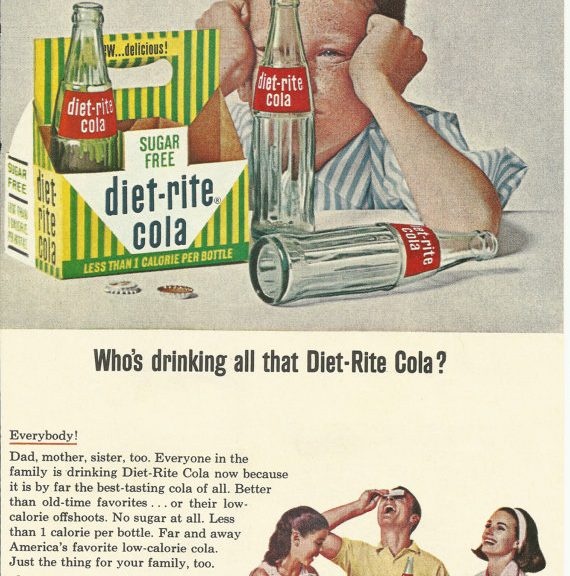
Diabetes and a patio – The story behind the story
Diabetes and a patio – The story behind the story
Diet Pepsi is celebrating its fiftieth anniversary. Much of the coverage has focused on how it had started life as Patio Soda and how this had been featured in the hit TV series Mad Men.
While the TV series took some liberties, it was based on the facts.
Royal Crown, a cola maker, introduced Diet Rite Cola in 1958. It was targeted towards the growing number of calorie-conscious women as a diet product and proved to be very successful.
Successful enough that both PepsiCo and Coca-Cola were forced to act, however not so successful that either one of the companies were willing, at least initially, to link the new diet products to their main brands.
Coca-Cola introduced Tab in 1963, and it was marketed to consumers who wanted to keep ‘tabs’ on their weight.
Patio Diet Cola was the brand of diet soda launched by PepsiCo, also in 1963. Fitness promoter, Debbie Drake, was its spokesperson and the drink was also marketed as a brand for the calorie conscious. 
Early in 1964 they released orange, grape, and root beer flavours but then, later that year, in light of good sales results, Patio Diet Cola became Diet Pepsi. The newly rebranded diet cola was advertised alongside the original Pepsi, with the tagline “Pepsi either way”.
Most of the remaining Patio flavours were phased out by the early 1970s, while a few survived until the mid-1970s.
The slightly fictionalised launch of Patio Diet Cola was featured in the first few episodes of series three of Mad Men and it was portrayed as a point of dispute between Sterling Cooper staff members when PepsiCo rejects a television commercial based on the film Bye Bye Birdie.
There is however another story behind this one, Tab and Patio weren’t followers, “me-toos” to Royal Crown’s Diet Rite Cola, they were the third and fourth on the market; me-three and me-four.
The original diet soda wasn’t even created for the calorie-conscious. It was born as a soft drink for people with diabetes.
This story behind the story goes back to 1904, when Hyman Kirsch, a Russian immigrant, began selling soft drinks in the Williamsburg section of Brooklyn , New York. Some years later, the successful Kirsch became Vice President of the Jewish Sanitarium for Chronic Disease (now the Kingsbrook Jewish Medical Center) and he and his son Morris came up with the idea of creating a special beverage treat for the hospital’s diabetic and cardiovascular patients. 
Using an artificial sweetener called calcium cyclamate to sweeten the product, they created a diet soda, a ginger ale, which they called “No-Cal.” No-Cal Root Beer, Black Cherry, Lime, Cola soon followed. They even introduced a chocolate flavour which was often mixed with a splash of milk by loyal users.
No-Cal was immediately successful selling over 2 million cases of soda in New York and Washington, D.C. alone, and by the end of 1953 the beverages were bringing in over $5 million a year. Its popularity went way beyond the customer base its makers had intended it for. Soon more than half the people buying No-Cal weren’t diabetic – they were just watching their weight.
However Kirsh didn’t have the massive marketing clout and national distribution of its larger rivals and in face of an increasing onslaught from, at first, Royal Crown’s Diet Rite Cola and then Coca-Cola and PepsiCo it disappeared from the marketplace.
No-Cal proved an unfortunate exception to the old marketing adage about the advantages of being first to market.
2 thoughts on “Diabetes and a patio – The story behind the story”
I am interested in finding a Pepsi Patio original advertising sign. Do you know where I can find one? Feel free to e-mail me with your answer at LMTIS2@sbcglobal.net
Sorry I don’t know. It’s the sort of thing that might crop up in ‘antique’ store or auction